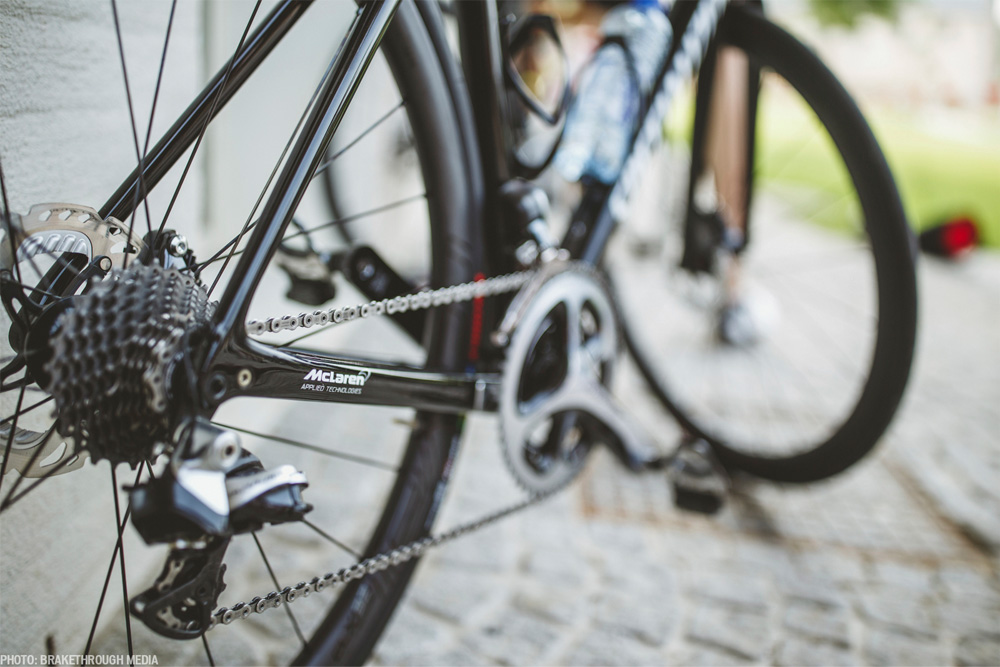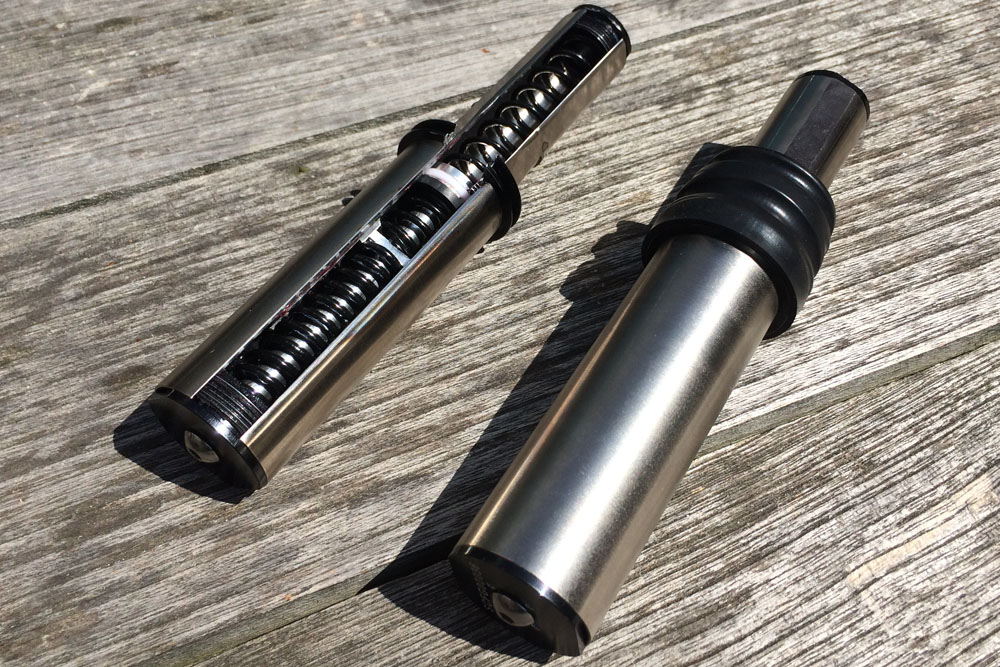New Specialized Roubaix: front suspension makes a comeback on road bikes
Updated endurance model comes with a suspension system built into the steerer tube for a more compliant and hopefully faster bike

For a brief period in 1990s it looked as though suspension on road bike was here to stay, with riders using the Rock Shox Paris-Roubaix SL suspension fork winning three successive editions of the Hell of the North between 1992 and 1994. However, just a few years later and the technology had all but disappeared.
Fast forward to 2016, and the brand new Specialized Roubaix (as well as the also-updated Specialized Ruby women's bike) is giving front end suspension a second life, with its new Ride Control technology that integrates a suspension system into the steerer tube, giving up to 20mm of travel. This creates a front end which is, wait for it, 4,538% more compliant than that on the old Roubaix.
>>> Endurance bikes: a complete buyer's guide
Clearly producing a more compliant bike helps to improve rider comfort, but Specialized says that this was not its end goal when creating the new Roubaix. Instead it says that it is attempting to create a smoother bike that will, over the course of long rides on rough roads, help the rider to go faster.
The development of the Specialized Roubaix has seen a continuation of the long-running collaboration between Specialized and McLaren, with McLaren's computer simulation technology being used in the initial stages of development to help guide Specialized's basic design, eliminating the need to produce endless basic prototypes.

From there Specialized began to experiment with different ways of improving the comfort of its flagship endurance bike, looking at two different types of compliance: splay compliance, where a component such as the seatpost or fork bends backwards when it hits a bump; and axial compliance, where a component moves up and down in a straight line when it hits a bump rather than bending. Specialized says that it is the latter that is the most efficient way of improving a bike's smoothness, so this is approach it pursued with the new Specialized Roubaix.
>>> Specialized's Rio 2016 bikes will change colour in the heat
The latest race content, interviews, features, reviews and expert buying guides, direct to your inbox!
The obvious place to concentrate when creating a more comfortable bike is on the front end, so Specialized experimented with building axial compliance above and below the head tube. Both were effective in improve comfort, but putting suspension systems below the head tube (such as with the suspension forks on mountain bikes) meant a loss of efficiency, something that was not the case when a system was placed above the head tube.

The result is the Ride Control system, effectively some springs placed within a 295g cartridge that sits inside the oversized carbon steerer tube, that is not only present on the Specialized Roubaix, but also the corresponding women's bike, the Specialized Ruby.
>>> New Trek Domane SLR has a very neat trick to let you change its stiffness and comfort
According to Specialized this gives a smoother ride that is therefore faster, as it reduces fatigue and also helps you to generate a steadier power output when riding over rough terrain. The system also helps to improve traction, keeping the tyres more closely attached to the road on rough roads, potentially meaning faster descents.
Watch: Sean Kelly on what it's like to ride the cobbles
Aside from the front suspension system there are a number of other comfort features on the new Specialized Roubaix. Most notably the bike has been designed to work best with wide 28mm tyres (one of the reasons that it is only available with disc brakes), and the seat clamp has also been dropped further down the seat tube, effectively increasing the length of the seatpost to give a little extra comfort at the front end.
>>> Six cobbled Classics bike trends that you should be following
However this is designed as a race bike for the likes of Etixx-Quick Step and, from 2017, Bora-Hansgrohe to use in the cobbled classics, and as such Specialized has designed the bottom half of the bike to be similar to its standard Tarmac road model.

Most notably, the fork is essential the same as the Tarmac, while the head tube is one degree steeper than on the previous model to improve the handling.
The new bike will be available in six different builds starting from £1,900 for the Specialized Roubaix Elite with Shimano 105 and going all the way up to the £7,500 S-Works model with SRAM Red eTap.
>>> Specialized adds disc brakes to Venge ViAS aero bike
In between those two are the Roubaix Pro with Shimano Ultegra Di2 (£3,800), Roubaix Expert with Ultegra Di2 (£3,200), Roubaix Expert with mechanical Ultegra (£2,400), and Roubaix Comp with a mixture of Ultegra and 105 (£1,900). There is also the option of buying the S-Works version of the frameset for £2,750. All models will be available in sizes 49cm - 61cm, while the Roubaix Pro and Roubaix Expert models with Ultegra Di2 will also come in size 64cm.
The S-Works Roubaix and the Roubaix Pro will both come equipped with Specialized's new Roval CLX 32 wheels, while the less expensive models will have aluminium rims from DT Swiss and Axis.
Henry Robertshaw began his time at Cycling Weekly working with the tech team, writing reviews, buying guides and appearing in videos advising on how to dress for the seasons. He later moved over to the news team, where his work focused on the professional peloton as well as legislation and provision for cycling. He's since moved his career in a new direction, with a role at the Department for Environment, Food and Rural Affairs.